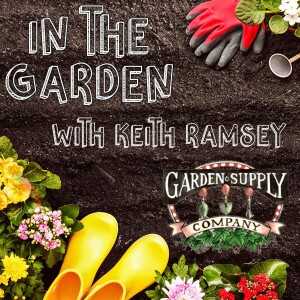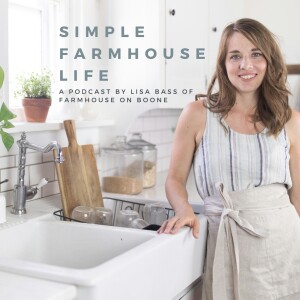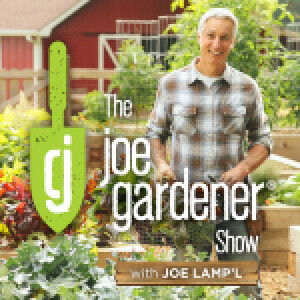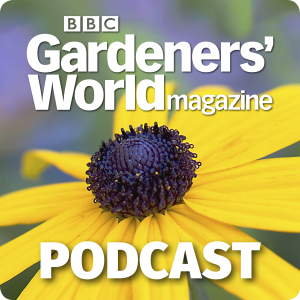

Keith Ramsey: [00:00:15] Keith Ramsey with garden supply company. We've had a lot of questions recently about square foot gardening. This time of year is people, have tons of interest in vegetable gardens, and a square foot garden is an older concept. It works very effectively. It gives people a grid pattern and an outline for how many plants they can put in a space.
It's more intense gardening. You're gardening with excellent soil and really good soil blends. And then, high nitrogen high Fertility. And then you're getting as much yield as you can out of each square foot. Square foot gardening, there are all kinds of recipes for soil.
My biggest thing is to add three or four different types of soil so that you're. I'll usually start with a soil conditioner as a base. It drains well, and it continues to decompose. It's got the right nutrient mix. And, but the drainage is the key.
And then I'll go with a peat-based some based product, an espoma organic potting soil, or a Coast of Maine raised bed mix. But all of those have the right nutrients and the right mix for planting straight into. And then I always add vermiculite. Vermiculite is. It's like Micah. That's been blown out.
And so Micah, they basically heat it, and it's got the perfect consistency for growing seeds in. I'll use that to top dress, some of these things when you're going to plant lettuce seed and that kind of stuff, but the square foot gardening there are good guidelines online.
As far as what you can put in a square foot. But like on an arugula plan, you're putting four of them in a square foot. So you've got four arugula plants and four arugulas. We'll keep people in arugula if you're not using it straight in a salad for, full time, year-round, almost it's a plant that will almost get Woody, and it'll grow for a year or two, and then you pull it out and replace it, but you can use it throughout the summertime.
A lot of the cool-season vegetables, we'll try to bolt and create flowers. And so you want to, you basically want to harvest it often enough, so it's not bolting. Cause when it, if it bolts and produces flowers and seed, it'll eventually just die out. Because of the nature of the plan, it's a biennial or an annual most of the greens some of them. You can see if you're seeding lettuce, you could see it across the whole square foot.
Basil, you can put two to four plants in a square foot. Beets and broccoli or Brussel sprouts cabbage. Some of those bigger things are one per square foot. They're really gonna, they're going to grow out, and they're going to push outside that square foot if they get really big.
And you can always cut some of the leaves off the edges to create more space for other things. The other piece of a square foot garden is a cool season, and vegetables start to end. You can pull out that section and go ahead and pop something back in. If it was getting springtime, Yeah, April May start getting hot this time of year.
Your lettuce starts to fail. You harvest the rest of it and eat that lettuce. Then you go in with peppers in that same space. So it's a nice thing because one foot by one foot, you can turn the garden over in the spring. And then the same in the fall, as the pepper as you harvest those last few peppers.
August to September timeframe, you want to be putting a lot of the broccoli and the cabbage and stuff in, and that's a good time of year to start dropping that kind of stuff back in. You pull your peppers out, and you put your broccoli and cauliflower and that kind of stuff back in the bed.
If, as far as fertilization goes, No, you can add fertilizer to a square foot garden at any point in time when I'm turning it over. I'm usually adding like an organic plant tone—Biotene to the soil and then every year. So you want to do a soil test, and then you can add the right nutrients to adjust that out.
The libraries in North Carolina have a soil test. And the garden centers usually have soil tests, and then you send it to the extension service. NC State will do the test for you for free.
Or you can drop it off. It's on borough road and behind the fairgrounds in Raleigh, but getting a soil test is a great idea. And then we've gotten soil kits at the store that you can pick up there a little faster than the state does it at their own pace, just as the state does.
They get as many of them, they get piles of them in at one time, and then they have to work through that whole process. It'll basically tell you where your nitrogen is and how much nitrogen per thousand square feet to add.
And people will bring them into the garden center, and we'll go through them and make recommendations. If you're using organic fertilizer, organic fertilizers are slower to make a difference in the soil. A lot of times, organic fertilizers have to be broken down by microbes.
In nature, and have to have moisture and whatnot where a chemical fertilizer. And when you're talking about veggies, how always like to remind people that a chemical fertilizer, not a chemical, it's a chemical chemically produced to get the nitrogen level up to where you really need it.
So I'm never worried about putting a chemically produced fertilizer in my veggie garden. I would rather have good strong tomatoes and have actually had something that works out and produces tomatoes than wait for that fertilizer to kick in. And sometimes it requires pounds and pounds. It's different. It's put a bag of fertilizer on, or put a truckload of fertilizer on, to get the nitrogen to where you need it.
With organics, I always use organics in a garden because. You can build that soil slowly but surely. You can get the nitrogen where it needs to be and get away from using as many chemical fertilizers because they are readily available. Some of them are quick release.
Some of them are slow release. And then when they're gone where the organic fertilizers continue to. add fertilizer to the soil as they break down
Joe Woolworth: [00:06:19] good resource that you would suggest to people for recommendations or even like a grid, layouts, gardening.
Keith Ramsey: [00:06:25] Yeah.
There are all kinds of stuff online. There's a square foot garden book that you could take out and take a look at. One of the keys is to plant is based on the sun. And the timing of the vegetables, so if you've got tomato plants, you're going to put them, you're going to put them in the very back of the garden.
If the sun's at your back, you want everything in front of those to be able to get some sun. If you have something like lettuce and try to grow it into the summertime or later in the spring, you could do it behind the tomatoes and actually use tomatoes as a screen.
Or planning the rows where the sun's going to go down the row. So if you've got, if you've got a lot of tall stuff and you don't want, and you don't want them to layer the garden down towards the sun, then you can plant them, plant the rows the other direction and have the sun sung actually make it down the row.
But that's a little more difficult and requires a little more space. Usually
Joe Woolworth: [00:07:15] in North Carolina, Cary, specifically, which is where we are in the garden supply company, is very proud of our giant trees. Is there a better, is it good to have your square foot garden in direct sunlight or. It was a bunch of tall trees.
Does that make a big difference? ...
More Episodes
All Episodes>>You may also like
Create Your Podcast In Minutes
- Full-featured podcast site
- Unlimited storage and bandwidth
- Comprehensive podcast stats
- Distribute to Apple Podcasts, Spotify, and more
- Make money with your podcast












